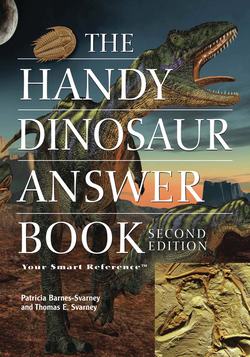Читать книгу The Handy Dinosaur Answer Book - Patricia Barnes-Svarney - Страница 98
На сайте Литреса книга снята с продажи.
How did fossil evidence support the theory of continental drift?
ОглавлениеScientists discovered the fossils of many identical-appearing species on widely separated continents. They had two theories for this. First, they theorized that separate species developed identically across the far-flung continents, a notion that was highly unlikely. The second theory was that the continents had been in contact with each other millions of years ago, and had somehow drifted apart.
Hundreds of millions of years ago the seven continents were joined together as a supercontinent scientists now call Pangea. It later broke up into Laurasia and Gondwanaland during the Triassic, and eventually split apart even more (based on a U.S. Geological Survey map).
For example, fossils found in South America were related to those in Australia and Antarctica. These landmasses were in contact sometime in the past, allowing species to roam freely, die, be buried, and become fossilized across these continents. The fossilized remains in the rock layers of the continents drifted with the landmasses, leading to widely separated—but nearly identical—fossils.
When did scientists determine the jigsaw puzzle fit of the continents?
The actual connection between the continental fit (the idea that continents fit together like the pieces of a jigsaw puzzle) was first proposed in 1858 by Antonio Snider-Pellegrini (1802–1885). Other scientists mentioned this idea for years afterward, but it was not until 1912 that German meteorologist and geologist Alfred Wegener (1880–1930) expanded the theory, suggesting that the continents at one time formed a supercontinent he called Pangea (or Pangaea). Wegener’s theory was not taken seriously until about the 1960s, when scientists believed they had finally worked out a mechanism (plate tectonics) for the movement of the continental plates.
